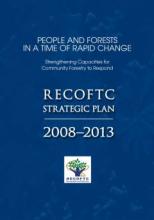/ library resources
Showing items 1 through 9 of 202.Nine Latin American countries plan to use silvopastoral practices—incorporating trees into grazing lands—to mitigate climate change. However, the cumulative potential of scaling up silvopastoral systems at national levels is not well quantified.
Knowledge transfer depends on the motivations of the target users. A case study of the intention of Indonesian coffee farmers to use a tree canopy trimming technique in pine–based agroforestry highlights path-dependency and complexity of social-ecological relationships.
Forests managed by Indigenous and other local communities generate important benefits for livelihood, and contribute to regional and global biodiversity and carbon sequestration goals. Yet, challenges to community forestry remain.
Decentralization in natural resource management (NRM) is increasingly promoted as it is believed to offer better management. This study explores the positive and negative aspects of the forestry conflict that sometimes increases with decentralization.
This report gives an overview of the Woodfuel Integrated Supply/Demand Overview Mapping (WISDOM) analysis carrried out under the Sustainable Forest Management and Bio-Energy Markets to Promote Environmental Sustainability and to Reduce Greenhouse Gas Emissions in Cambodia (SFM) project in order t
Hand tools are the most commonly used for subsistence or household use when harvesting bamboo or fuelwood. Axes, two-man handsaws and other hand tools are presented and discussed in this factsheet.
Steep-slope harvesting probably poses the biggest challenges in forest harvesting throughout the world. Traditionally, on slopes above 30 percent, gravitational transport is applied in manual harvesting operations by simply sliding logs downhill.
The Asia-Pacific region is experiencing rapid changes. There is a major need to strengthen capacities to assist countries and forestry stakeholders to respond in ways that benefit both people and forests.
Paginação
Land Library Search
Through our robust search engine, you can search for any item of the over 73,000 highly curated resources in the Land Library.
If you would like to find an overview of what is possible, feel free to peruse the Search Guide.









